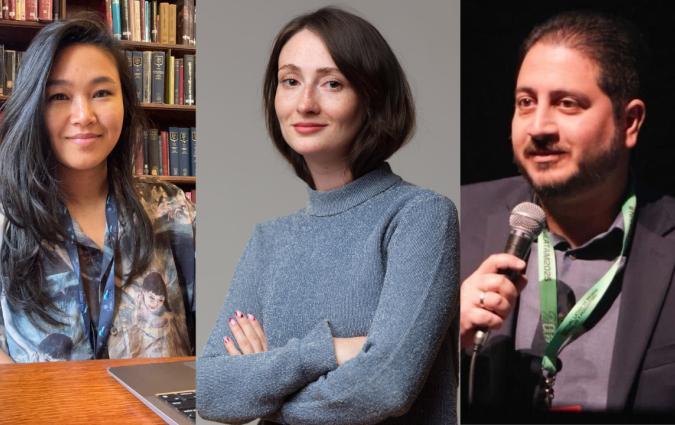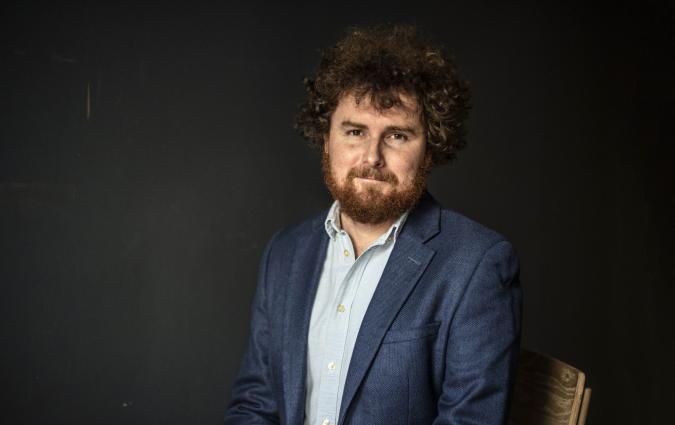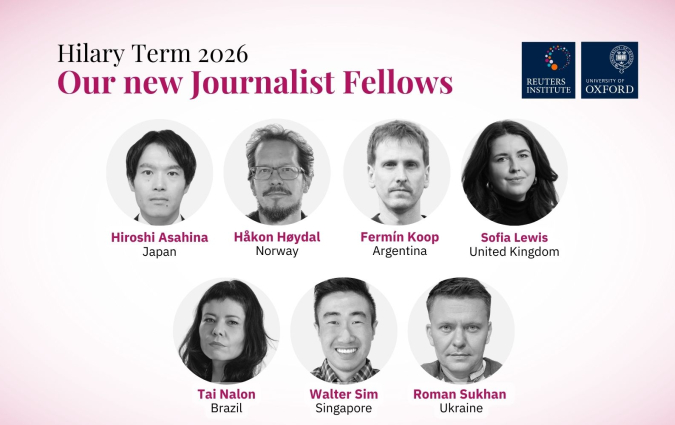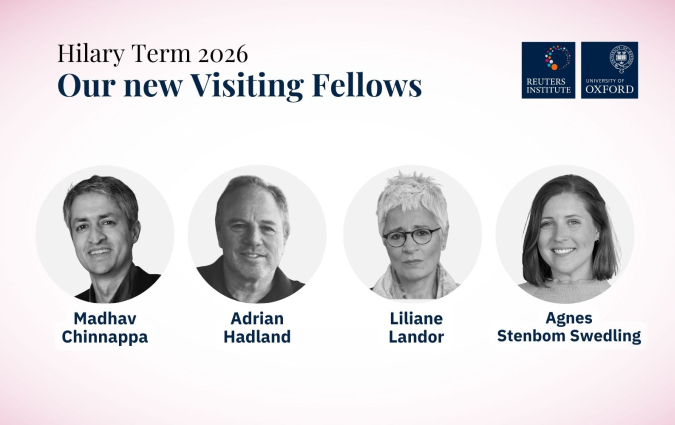How an Asian business site attracted 30,000 subscribers by publishing one story a day

The Ken’s co-founder and CEO Rohin Dharmakumar.
The Ken is a five-year-old pan-Asian, digital news outlet publishing one online story every weekday. Focused on narrative storytelling and deep reporting, it aims to bring a fresh approach to business stories for audiences in the region and beyond. Tapping into a continent “in the early years of the golden age of subscriptions”, it’s entirely subscription-funded – a model which reflects the strategic focus that shapes its editorial, product and business decisions.
The outlet has received backing from Omidyar Network and last year expanded its coverage from India to South East Asia. A podcast they launched recently, Unofficial Sources, was driven by audience needs. It was the most requested product in an audience survey in 2018.
The Ken’s model is in stark contrast to many of the region’s legacy media houses, funded by advertising and controlled by for-profit corporations. It sees itself as complementary to, not as a replacement for these and other outlets, but is keenly aware of how over-expansion, editorially and operationally, has shaped an industry which must now also compete with non-journalism players for people’s time and money. In markets where online is the most popular news source, could The Ken’s digital-first publishing and reader focus offer lessons for a disruptive future? As it approaches its fifth birthday, I spoke to The Ken’s co-founder and CEO Rohin Dharmakumar to find out more.
Q. You launched The Ken in India in October 2016. What was your motivation?
A. Our starting point was a way to do meaningful business journalism without falling into the trap of setting up a large newsroom to punch out lots of stories each day and rely on advertising, sponsorships and falling rates. Being journalists, we wanted to do what we love in a way that makes money and hopefully turn it into a sustainable media business.
We're not trying to replace newspapers and we don’t want to be positioned as a trade publication. Before we started, we did some small-scale surveys and common feedback was that people were no longer reading business newspapers because they didn’t understand them or felt talked down to. We love business journalism and thought a narrative storytelling focus could address this.
Q. One of The Ken’s distinguishing features is that it publishes one story a day, five days a week online. Does this effort to counter endless content work?
A. One of the beauties of starting with some capital [the site initially raised $400,000 in seed funding] is you have to look at how to be profitable or worthy for the next investor to come in. Thinking of this as a business rather than a calling means it doesn't make sense to do lots of stories. That takes a large newsroom and, frankly, we couldn't afford it.
We weren’t entering a market where we would be the only thing our readers consumed, so we couldn't ask for more than 15-20 minutes of subscribers’ time each day. The one story a day model also works for writers too. We want to tell meaningful stories and they take time to report, edit and shape, especially if you're doing long-form, narrative journalism. It became part of our sales proposition too: one story a day because it makes sense for everyone involved – the business, readers and our journalists.
We’ve evolved with a Saturday newsletter for subscribers, the Nutgraf, and, since March 2020, a daily newsletter, Beyond The First Order. When the pandemic started, the world was changing so fast our readers needed a sense of what was happening. Newspapers and websites cover the first order, so we cover the second and third order effects of the pandemic.
Q. In February 2020, The Ken launched its South East Asia coverage with an independent subscription available and full-time writers in Singapore, Malaysia, Indonesia and Thailand. What prompted this expansion?
A. To do just five stories a week, we had to make it count. There had to be a logic to what we would do and what we would not, so we started as an India-centric player focused on tech and start-ups. Covering a handful of spaces was the only way we could offer depth and meaning while producing 20-22 stories a month.
In South East Asia, we knew there was no similar product and met a group of colleagues who shared our motivation. There was no reason why it would not work – India's perhaps an even tougher market in terms of income levels or what people pay for news.
Our South East Asia audience is slightly ahead of where India was in 2017-2018. The initial set of people talking to us come from the tech start-up and knowledge economy sectors. They're interested in keeping track of disruption, have the most disposable income and are leading adoption of subscription products. Soon, we'll start to see more people becoming comfortable with subscriptions and reading quality journalism, because it's quality journalism, not just because it's something they need to use.
Q. The Ken has always operated a subscription model. Why?
A. Subscription models were still nascent in 2016. Early examples weren’t in India, a market massive in scale where no one believes in paying for journalism. Fortunately, our angel investors gave us confidence to hire writers. We weren’t waiting for subscriptions to reach a certain level to do that.
We are entirely subscription-funded with more than 30,000 subscribers. We've never earned a dollar in advertising or sponsorships. We may look at what other forms of knowledge and insight we could provide, because that’s what subscribers pay for – the innovation and evolution around learning right now is incredible, for example – but whether we offer different subscriptions or products, our business model will focus on charging the end user. It’s the purest form of a transaction. I don't need to sell your data, rather I'm giving you something which you find valuable and you're paying me.
When we started, an annual subscription costed more than subscribing to India's three leading business newspapers put together. It was ambitious. After a year-and-a-half, we entered the corporate subscription space thinking great business journalism keeps you sharper and better, so it has value for teams and organisations too. We built one of the world's first self-serve corporate subscription offerings – no complicated processes for requesting and installing a subscription across a business, no big team managing it. The price is transparent and the same for everyone.
Q. Who are your subscribers and how have you grown this base?
A. In the beginning, our subscriber base naturally skewed towards those from the startup tech and internet spaces. Gradually we’ve diversified our story coverage to healthcare, telecom, policy stories, so our subscriber base is much more diverse. We can’t diversify our focus too much, because then people won't get a sense of what their subscription stands for. At the same time, we want to expose our readers to stories that they may not otherwise see.
We can't afford to do custom installations so by making corporate subscriptions entirely self-serve and through word of mouth, we've got 150 organisations signed up in India and around the world. Until six months ago, we didn't have a single sales person and today we have just one.
We’re disproving the assumption that young people don't read journalism, especially long-form. One of the largest readerships for us is students via a campus or student-price subscription. The top 20 postgraduate colleges in India all subscribe.
Our audience asked for joint subscriptions for couples and families, so we built that too and we offer a three-year subscription package to our most valuable subscribers. Our biggest enemies are attention span and churn. You need time to convince people to subscribe and renew. It’s a big ask to do that in one to three months. You’re more likely to retain them after they’ve spent a year with you. That's a whole lot of trust in a young journalism start-up to be around three years from now, but roughly 98% of our subscriber base is on one- or three-year subscription plans. An individual story can be purchased for $20, a price that doesn’t cannibalise our subscription model.
Q. The Ken is approaching its fifth birthday. What’s next for the site?
A. We've never done events. When events are what's making money, it draws on your organisation’s bandwidth. We believe in subscriptions and decided to give them time to mature. The revenue we could make from a single event is much more than selling thousands of subscriptions but choosing what not to do is as important as choosing what to do.
Our objective is to build a sustainable business which may be around 20, 30, 50 years from now. At this point, it's tempting for us to coast or think problems are solved, but, in the last 12 months, there has been an incredible amount of innovation, from Substack and the new breed of journalism it’s powering to the New York Times and Wall Street Journal.
The definition of media is changing. We no longer have the luxury to say: “I'm a journalism publication, so you should subscribe to this.” The reader is saying, “I've got this much time and money and I am going to go wherever I get knowledge, insight, entertainment.” You could be competing with a Substack writer, MasterClass, Netflix, a newspaper or someone who’s just started blogging. Subscriptions have become more mainstream. Anyone has the ability to monetise the knowledge they're offering.
We don't know what the next few years are going to look like. We need to stay ahead of stuff that we don't even know about yet. It makes me afraid, but it also excites me and that’s what I hope will carry us through the next five years and the next five after that.
Laura Oliver is a freelance journalist based in the UK. She has written for the 'Guardian', BBC, 'The Week' and more. She is a visiting lecturer in online journalism at City, University of London, and works as an audience strategy consultant for newsrooms. You can find her work here.







